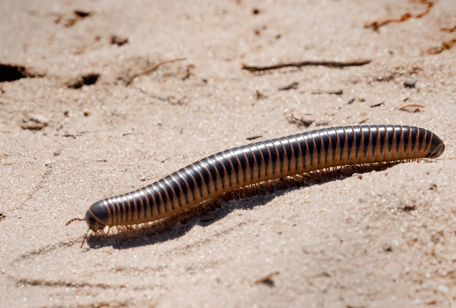
Chicobolus spinigerus
Southeastern coasts of the United States (South Carolina through Florida)
Not Listed
Fact or Myth
Millipedes do not actually have 1,000 legs. In fact, they only have two pairs of legs on most of their body segments. A newly-hatched millipede begins with only three pairs of legs on six body segments. As a millipede molts over its lifetime, it adds pairs of legs and more body segments (up to 12) through an anamorphic development process, reaching up to a couple of hundred legs overall.
Stink Glands
Millipedes have a special defense mechanism called ozopores, or stink glands. The animal is able to emit a distasteful compound and foul odor to detract predators. This chemical could burn or blister skin, so take caution when handling a millipede.
Nest Construction
A female millipede will burrow into loose soil to construct a nest. She will use the surrounding soil, decomposing plant material and her own feces to mold her nest. The combination of these resources allows a protective, encapsulated coating to form. Once the nest is complete, the female will lay up to 100 eggs. Hatchlings emerge in approximately one month.
